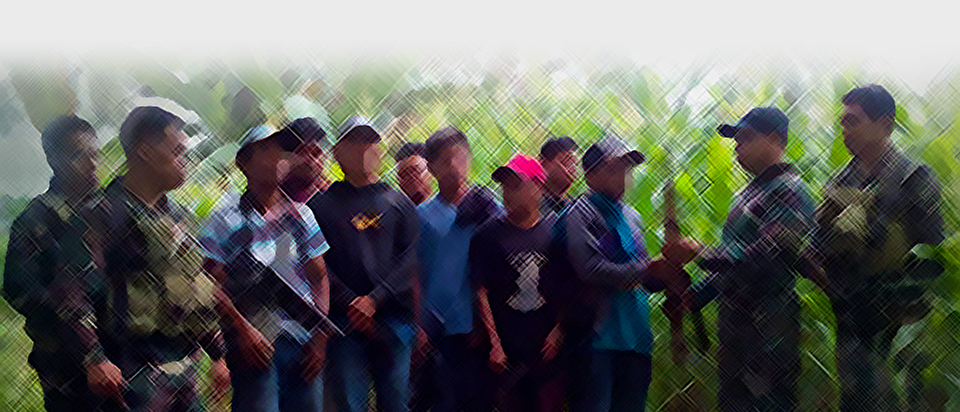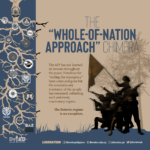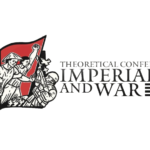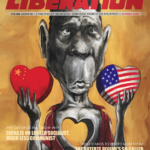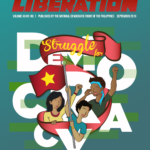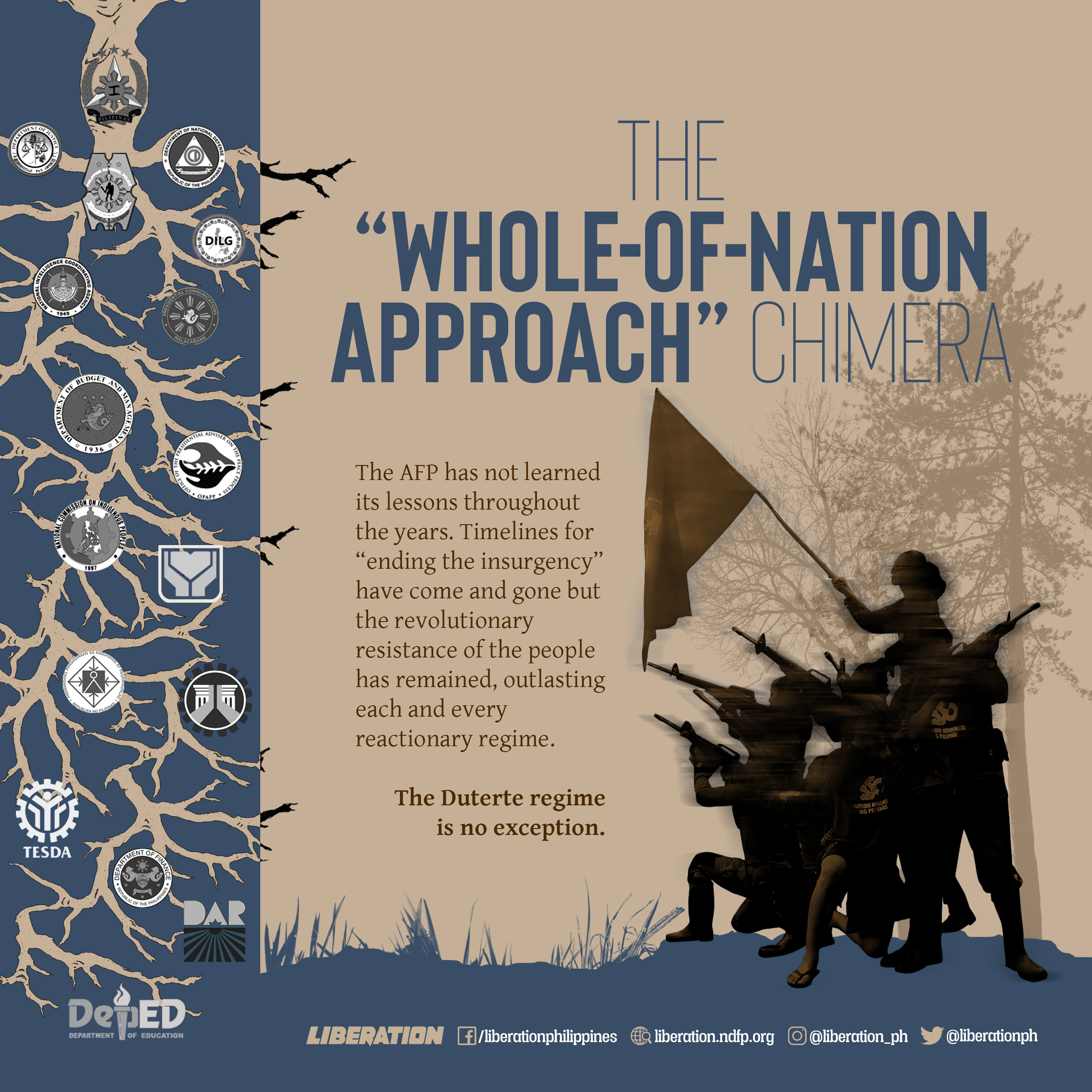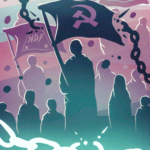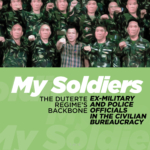Manlalakbay sa Magdamag
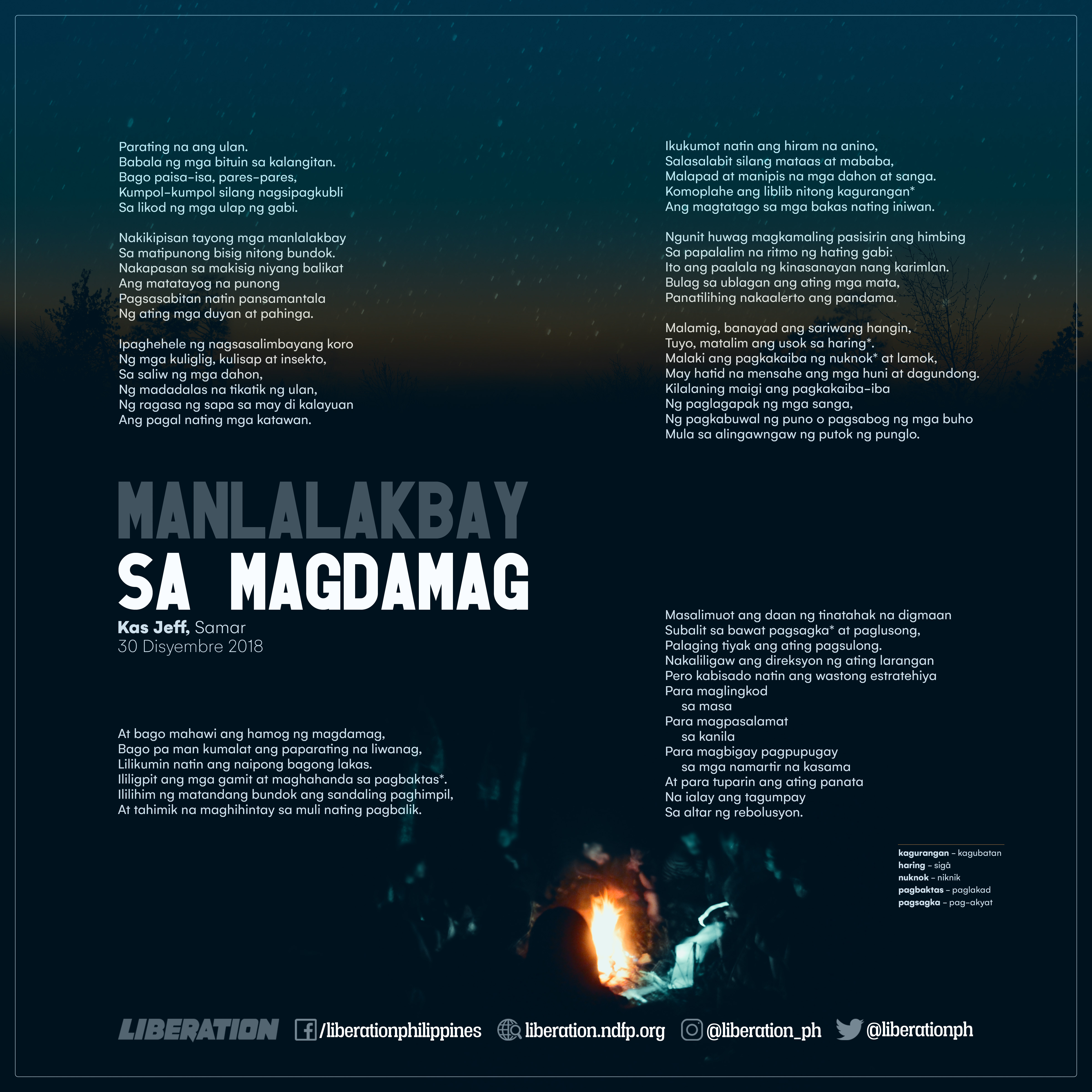
ni Kas Jeff, Rodante Urtal Command [Isinalin nina Kasamang Tara, Kasamang Sara, Kasamang Ara]
Tiarabot na an uran.
Pangilal-an han mga bituon ha kalangitan.
Antes pausa-usa, pades-pades,
Parungpong hira nga manhitago
Ha luyo han panganuron han kagab-ihon.
Makikisirong kita nga mga manlalakbay
Ha buksol nga butkon hini nga bukid.
Nakapas-an ha maabtik niya nga sugbong
An mga hagtaas nga kahoy
Temporaryo nga sasab-ongan naton
Han aton mga duyan ngan pahuway.
Kakantahan han durungan nga koro
Han mga ngiya-ngiya, mananap ngan insekto,
Ha duyog han mga karasikas han mga dahon,
An agsob nga panuro han uran,
Ha haganas han sapa ha unhan
An pagal naton nga mga kalawasan.
Igtataklap naton an huram nga dagaw
Surusumpay hira nga hitaas ngan habubo,
Halapad ngan magnipis nga mga dahon ngan sanga.
Kamuplahe an kasusudkan hini nga kagugub-an
An magtatago han aton mga tiagi nga nahibilin.
Pero ayaw pagsayop hin hilarum nga pangaturog
Ha tikahilarum nga ritmo han katutnga nga kagab-ihon:
Ini an pahinumdom han kahigaraan han kasisidmon.
Buta ha hunapan an aton mga mata,
Pirme nakaandam an pan-abat ta.
Mahagkot, mahinay an sariwa nga hangin,
Mamara, mahadlat an aso ha haring.
Dako an kaibhan han nuknok ngan namok,
May dara nga mensahe an mga huni ngan dalugdog.
Kilalal-on hin maupay an pagkaiba-iba
Han nagkakahulog nga mga sanga
Han katumba han mga kahoy o mga bagakay nga nabuto
Tikang ha alingawngaw han putok han punglo.
Ngan antes mawaswas an yamog han mag-aga,
Antes pa magwarak an tiarabot nga lamrag,
Pagtitirub-on naton an natirok nga bag-o nga kusog.
Hihipuson an mga gamit ngan mag-aandam han paglakat.
Isesekreto han lagas nga bukid an uruunina nga paghapil
Ngan mamingaw nga maghuhulat ha utro naton nga pagbalik.
Kumplikado an dalan han ginhahasog nga gerra
Pero ha kada pagsagka ngan paglugsong
Pirme seguruhon an aton pagsulong.
Nakakawait an direksyon han aton nga larangan
Pero kabisado naton an tukma nga estratehiya
Para maglingkod
Ha masa
Para magpasalamat
Ha ira
Para magbigay pagpupugay
Ha mga namartir nga kasama
Ngan para tumanon an aton panaad
Nga ighalad an kadaugan
Ha altar han rebolusyon.
===========
MANLALAKBAY SA MAGDAMAG
Parating na ang ulan.
Babala ng mga bituin sa kalangitan.
Bago paisa-isa, pares-pares,
Kumpol-kumpol silang nagsipagkubli
Sa likod ng mga ulap ng gabi.
Nakikipisan tayong mga manlalakbay
Sa matipunong bisig nitong bundok.
Nakapasan sa makisig niyang balikat
Ang matatayog na punong
Pagsasabitan natin pansamantala
Ng ating mga duyan at pahinga.
Ipaghehele ng nagsasalimbayang koro
Ng mga kuliglig, kulisap at insekto,
Sa saliw ng mga dahon,
Ng madadalas na tikatik ng ulan,
Ng ragasa ng sapa sa may di kalayuan
Ang pagal nating mga katawan.
Ikukumot natin ang hiram na anino,
Salasalabit silang mataas at mababa,
Malapad at manipis na mga dahon at sanga.
Komoplahe ang liblib nitong kagurangan*
Ang magtatago sa mga bakas nating iniwan.
Ngunit huwag magkamaling pasisirin ang himbing
Sa papalalim na ritmo ng hating gabi:
Ito ang paalala ng kinasanayan nang karimlan.
Bulag sa ublagan ang ating mga mata,
Panatilihing nakaalerto ang pandama.
Malamig, banayad ang sariwang hangin,
Tuyo, matalim ang usok sa haring*.
Malaki ang pagkakaiba ng nuknok* at lamok,
May hatid na mensahe ang mga huni at dagundong.
Kilalaning maigi ang pagkakaiba-iba
Ng paglagapak ng mga sanga,
Ng pagkabuwal ng puno o pagsabog ng mga buho
Mula sa alingawngaw ng putok ng punglo.
At bago mahawi ang hamog ng magdamag,
Bago pa man kumalat ang paparating na liwanag,
Lilikumin natin ang naipong bagong lakas.
Ililigpit ang mga gamit at maghahanda sa pagbaktas*.
Ililihim ng matandang bundok ang sandaling paghimpil,
At tahimik na maghihintay sa muli nating pagbalik.
Masalimuot ang daan ng tinatahak na digmaan
Subalit sa bawat pagsagka* at paglusong,
Palaging tiyak ang ating pagsulong.
Nakaliligaw ang direksyon ng ating larangan
Pero kabisado natin ang wastong estratehiya
Para maglingkod
sa masa
Para magpasalamat
sa kanila
Para magbigay pagpupugay
sa mga namartir na kasama
At para tuparin ang ating panata
Na ialay ang tagumpay
Sa altar ng rebolusyon.
30 Disyembre 2018
Northern Samar
kagurangan – kagubatan
haring – sigâ
nuknok – niknik
pagbaktas – paglakad
pagsagka – pag-akyat





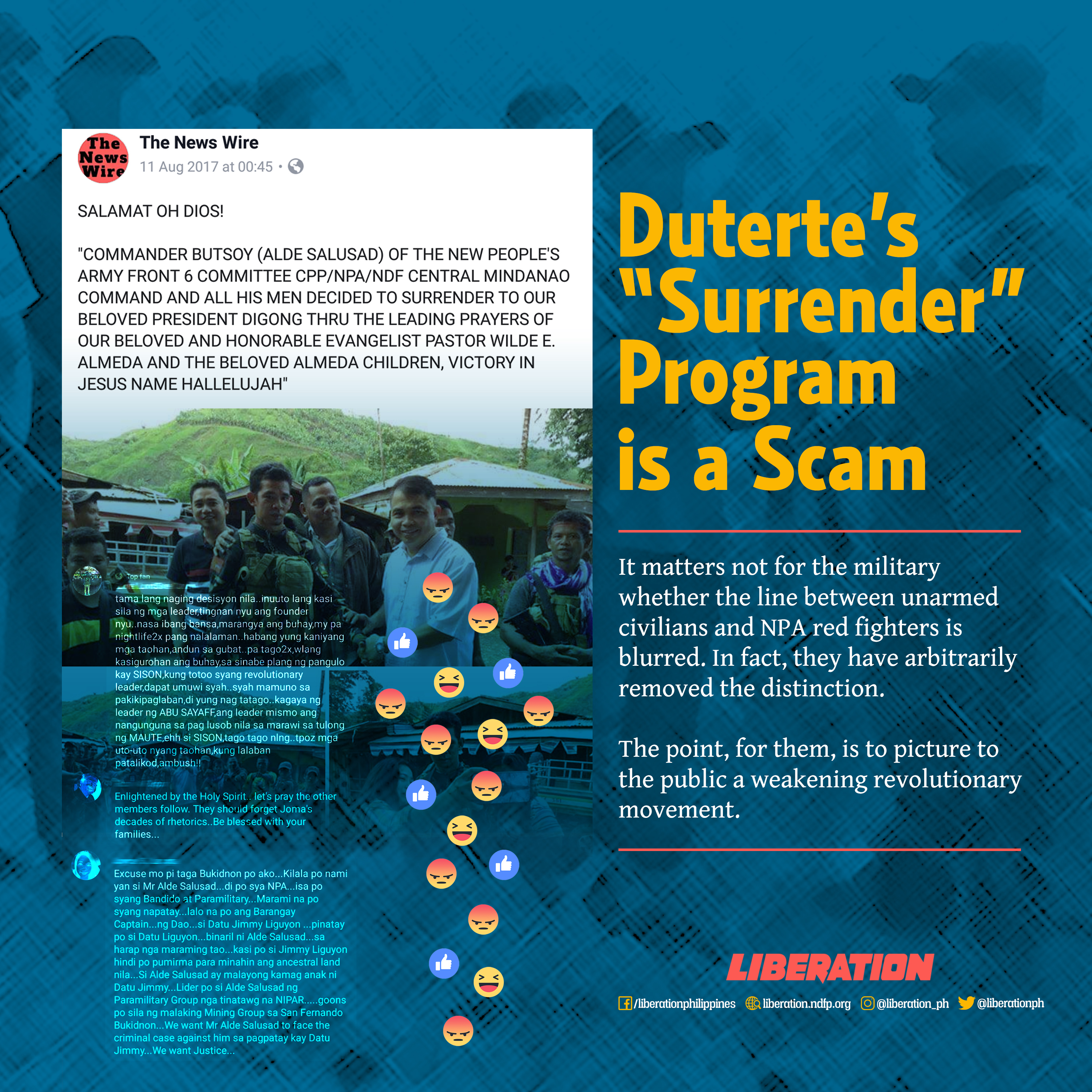
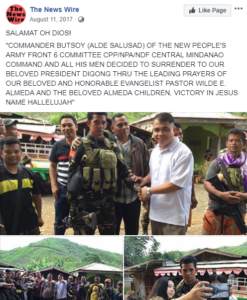 In August 11, 2017, five years after he killed Liguyon, Salusad was presented by the AFP as “NPA surrenderee” and was awarded Php100,000 in cash. Then in March 2018, the military included Salusad in the list of more than 600 names and aliases of alleged members of the CPP and the NPA in a petition for proscription filed at a Manila regional trial court.
In August 11, 2017, five years after he killed Liguyon, Salusad was presented by the AFP as “NPA surrenderee” and was awarded Php100,000 in cash. Then in March 2018, the military included Salusad in the list of more than 600 names and aliases of alleged members of the CPP and the NPA in a petition for proscription filed at a Manila regional trial court.